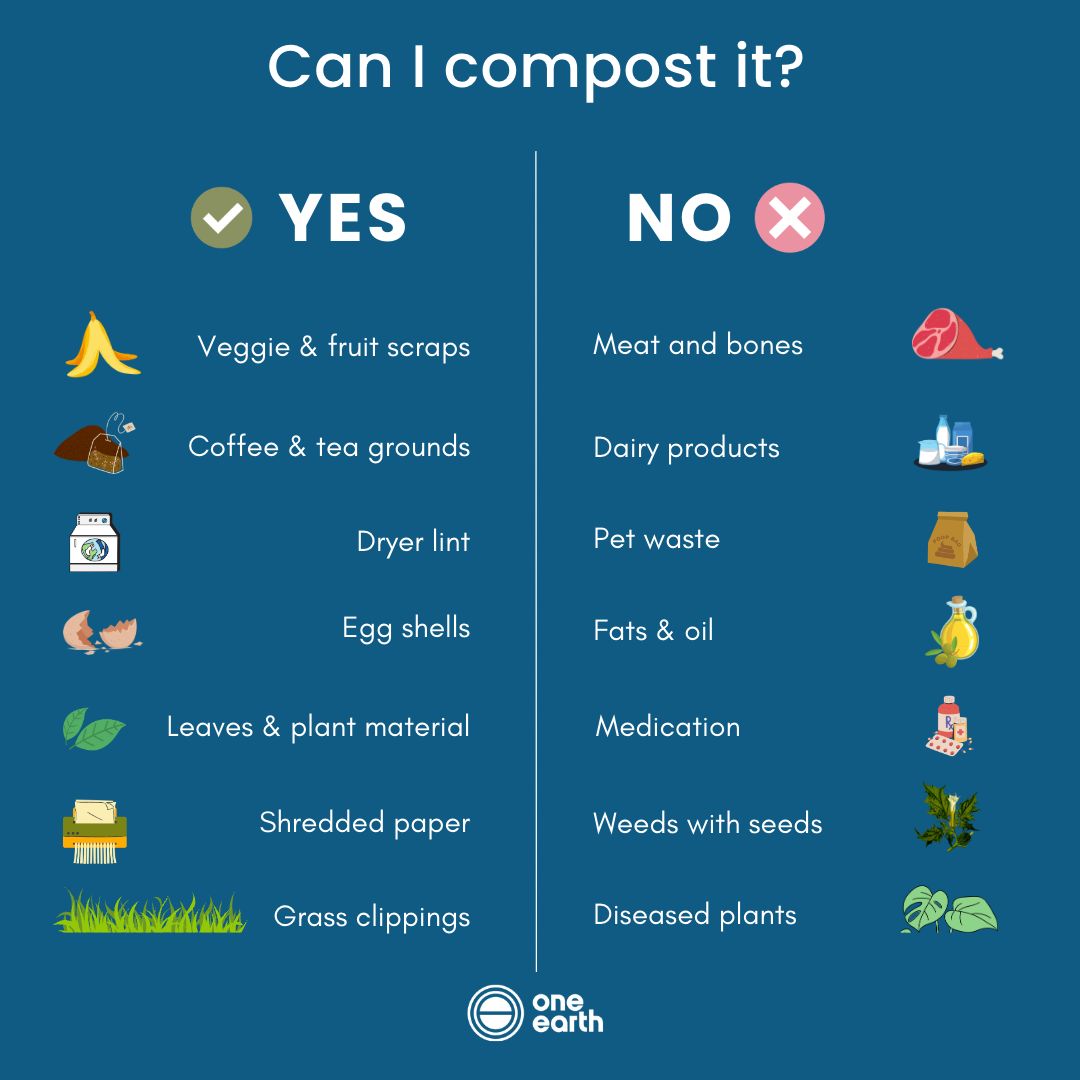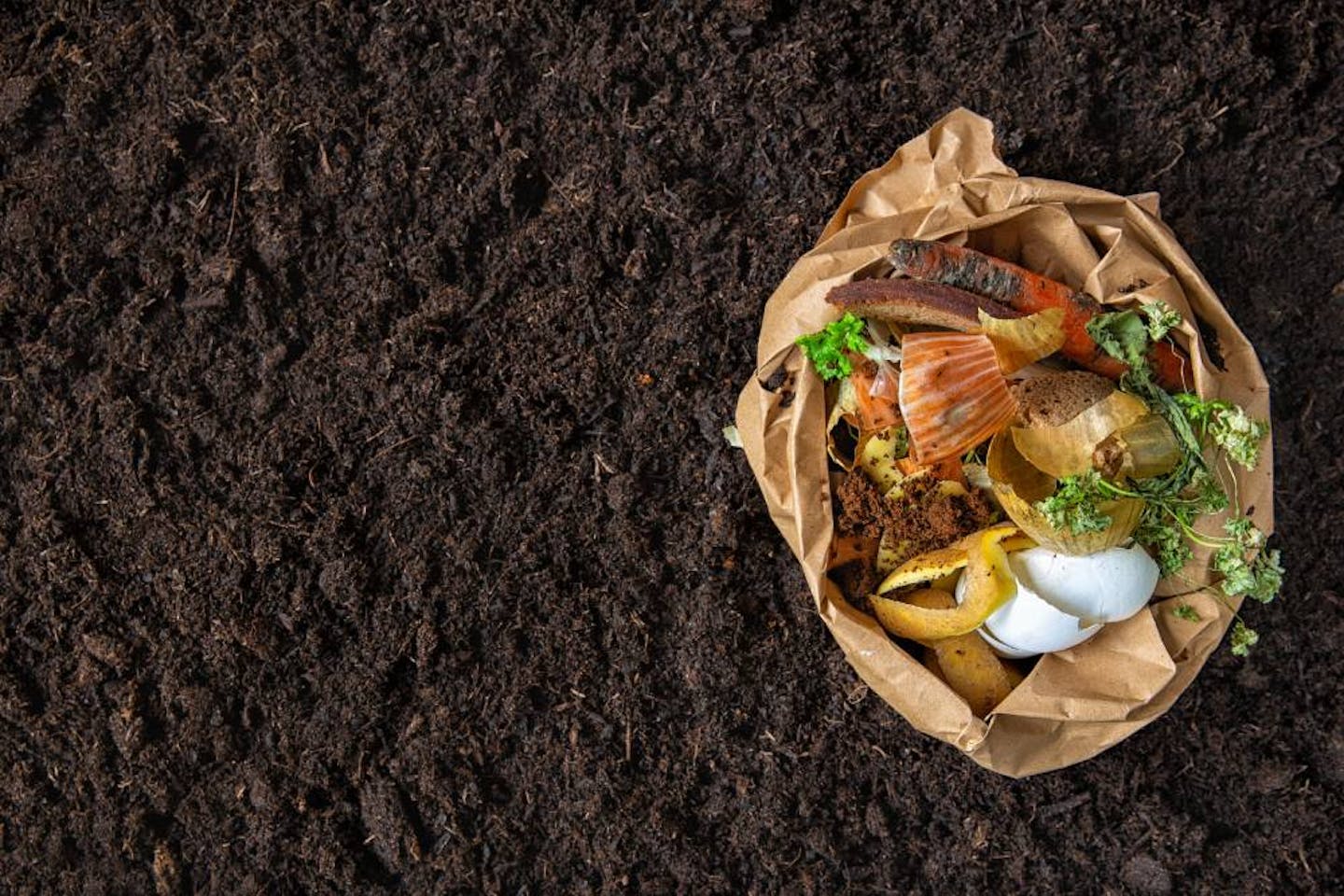Composting: The simple climate solution you can do at home
Did you know that one-third of all the food we produce is thrown away?
One out of every three bananas, slices of pizza, pieces of cake, bites of casserole, and Thai takeout end up in the trash. Not only is this wasteful, but all those bits of food contribute immensely to climate change.
Food is energy. If not used to fuel bodies, that energy has to go somewhere, and it goes into our atmosphere. While the best solution is to not waste food, this is impractical. Some waste is inevitable.
So, what's the best achievable solution? Composting! The surprisingly simple art of turning food waste into nutrient-rich soil through natural decomposition.
.jpg)
What is composting?
Composting is the act of placing food scraps, yard waste, leaves, grass clippings, and other biodegradable materials into a separate container instead of throwing them in the trash. Microorganisms, including bacteria, fungi, and other decomposers, break down the organic matter and transform it into a type of pleasant-smelling soil known as "black gold.”
Black gold is richer in nutrients than topsoil, making it an ideal supplement for soil that is depleted, promoting vegetation growth in gardens, farms, and potted plants. It can also serve as an amendment. Adding it to existing soil improves fertility and structure.
How is composting a climate solution?
Composting can help solve the climate crisis in several ways:
1. Reducing food waste
Landfills are a major source of carbon emissions due to the decomposition of organic matter in anaerobic (without oxygen) conditions. You can reduce these emissions by diverting food waste and other organic materials from landfills to compost bins.
2. Reducing methane emissions
The anaerobic decomposition of food waste in landfills causes the release of methane gas, a greenhouse gas 25 times more potent then carbon dioxide at trapping heat in the atmosphere. By composting food waste in an aerobic (with oxygen) environment, you can reduce methane emissions as the organic materials break down.
3. Restoring soil health
Compost enriches the soil by providing essential nutrients, improving water retention, and enhancing microbial activity, leading to healthier and more resilient plants. Healthy soils also function as carbon sinks, absorbing CO2 from the atmosphere and storing it deep within the earth.
4. Reducing synthetic fertilizer use
Compost is a natural fertilizer, providing essential nutrients to growing plants. Using compost instead of synthetic fertilizers reduces the demand for fossil fuel-based fertilizers that are energy-intensive to produce and release carbon emissions during their manufacturing process.
How to set up a backyard compost bin
Creating a compost bin in your backyard is the most common way to compost. Here is a step-by-step guide on how to get started.
- Choose a location. Your compost bin should be placed in a shady spot that gets some sunlight and is easy to access.
- Create a bin. You can use a variety of materials to make a compost bin, including wood, plastic, or metal. The container should be around 3 feet wide and 2 to 3 feet deep, have lids and holes drilled in the sides for airflow, and be bottomless.
- Learn what and what not to compost.

- Understand the difference between green and brown materials. “Greens” are nitrogen-rich, wet, and colorful waste like vegetable peels, fruit scraps, coffee and tea grounds, and grass clippings. “Browns” are carbon-rich and dry, such as brown leaves, egg shells, hay, cardboard, and dryer lint.
- Layer your compost. Place alternating layers of green and brown material. When using food waste, ensure it is buried under a layer of browns to avoid problems with pests.
- Turn your compost. To help the composting process, you must turn your compost every few weeks. This will help to aerate the compost and speed up the decomposition process.
- Keep it moist. Compost needs moisture to break down properly. Add water or spray down your bin as needed. The texture of your compost should resemble that of a slightly damp, wrung-out sponge.
- Be patient. It can take several months for compost to be ready to use. Once it is ready, you can use it to fertilize your plants.
City composting, for those with limited space
For those in apartments or without a backyard, there are many options to still participate in composting.
Municipal food scrap bins
Some communities now provide food scrap bins alongside trash and recycling bins. Food scraps collected at the city level typically go to a large industrial composter, where items are often shredded or chopped upon arrival and processed at high temperatures.
Donate
Many urban gardens and farmers' markets accept compost materials if you don't have a backyard, access to a city-run food scrap service, or simply want to avoid dealing with a compost heap.
Join a composting community
There are also networks for organics recycling, like LA Compost or MakeSoil, founded by Josh Whiton, where individuals can search online to find and drop off their compost materials at a local site or become a compost host themselves.
Smart composters
Technology has now entered the composting arena, with companies like Lomi and Mill offering bins that fit on your countertop or look like a sleek enclosed trash can. These smart containers speed up the process and can often turn food scraps into soil overnight.
Create a smaller container
While it can be tricky to maintain (aka keep from getting smelly), the backyard process can be done at a smaller scale with a compost bin kept under the sink or on a patio or balcony. One way to help is by using worms in your compost.
.jpg)
Meet your composting assistant: worms
Vermicomposting is composting with the help of worms. Worms digest scraps and excrete castings that are rich in plant nutrients. Researchers are also discovering that the living microorganisms found particularly in vermicompost can help protect crops from common diseases and reduce the need for herbicides and pesticides.
However, not just any old worm will do. Many worms breathe through their skin and require moisture to survive, which may not be provided in a typical compost bin.
Instead, specifically red wiggler worms should be used.
Red wigglers are a subspecies of earthworms adapted to decaying organic material that thrives in rotting vegetation, compost, and manure. Rarely found in soil, the surest way to get the best quality vermicomposting worms is to purchase them from professional breeders online or in a store.
Join the composting movement!
Whether with a backyard heap, smart kitchen container, or local food scrap bin, composting is a simple and effective way to reduce your impact on the climate.
By composting food waste, you can help to reduce methane emissions from landfills, improve soil health, and reduce the need for synthetic fertilizers. There are many different ways to compost, so you can find a method that works for you and your lifestyle.
Start composting today and help be part of the solution, making a more sustainable future for us all!



